Introduction:
Unless you've been living under a rock for the last year or so, you're certainly aware of the great achievements and milestones Cardano has recently made, which have kicked it up to be the third-largest cryptocurrency on the market after BTC and Ethereum. This should come as no surprise given the great underlying tech behind Cardano that makes it superior over most of its peers.
Truth is, I was thinking of doing a comprehensive and in-depth review on Cardano, but after I had dug deep into the weeds, I just realized how impossible it is to cover all its aspects and achievements in a single article. So, in this post, I will be limiting myself to covering its technical aspects and I'll be getting back to in the coming posts to cover some other of its mind-blowing sides...
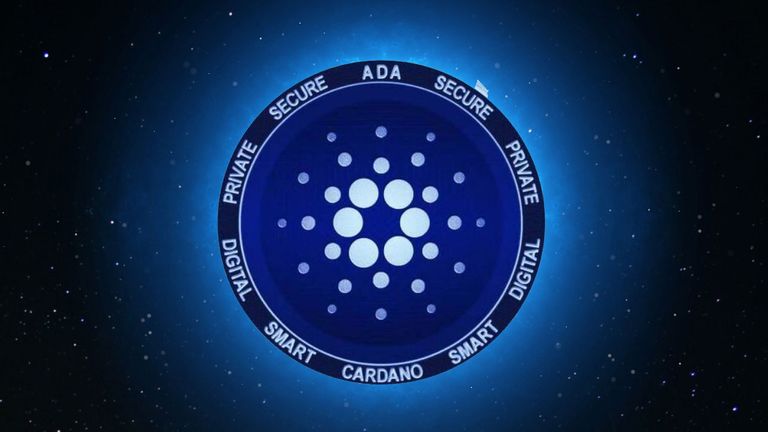
Contents:
1 What is Cardano?
2 The birth of the Cardano project
3 Cardano's Roadmap
- Byron
- Shelley
- Goguen
- Basho
- Voltaire
4 Cardano staking Physiology
ِ5 Programming Language
Hope you find it interesting...
What is Cardano?
It is an open-source public blockchain meant to provide a decentralized platform that has its rules and guidelines which can be used by people around the world to build smart contract projects and decentralized applications.
It is basically trying to dethrone Ethereum as a leader of contracts cryptocurrencies and presents itself as a superior blockchain in this space. It may look like "mission impossible", but Cardano is still going forward at a steady pace.
Cardano is also the only cryptocurrency that depends on scientific methodology, meaning that all potential upgrades for the project are sent to academic institutions prior to implementation. This has made Cardano a relatively slow-moving project compared to Ethereum, but it has also granted it a vote of confidence from those who believe in science, whether they are corporations or regular people.
There are three parallel entities that contribute to developing the Cardano project and these are:
The Cardano Foundation:
An independent entity based in Switzerland and is meant to promote Cardano's adoption, development, and improvement.Input Output Hong Kong (IOHK):
A limited technology firm that was founded by Charles Hoskinson and Jeremy Wood in 2015 and is meant to work on the development of Cardano. That said, IOHK touts itself as "a research and development company committed to using the peer-to-peer innovations of blockchain to build accessible financial services for all", and it has actually worked for other projects besides Cardano such as Ethereum Classic, RS Coin, and Scorex.Emurgo:
A startup incubator dedicated to bringing new organizations and enterprises into the Cardano project.
The birth of the Cardano project:
Cardano is the brainchild of Charles Hoskinson, a computer scientist, and technology entrepreneur who is deeply involved in blockchain technology. He was also one of the "8 cofounders" who invented Ethereum alongside the legend Vitalik Buterin himself. However, a dispute arose and led to Charles leaving Ethereum and founding the Cardano project, which would become one of its fiercest competitors.
Speaking of competition, I found something quite funny a few days ago, wherein a follower asked Vitalik if there was anything he regretted about Ethereum and the answer was "the whole 8 founders thing". 😂
Cardano funded itself through an initial coin offering (ICO) that started in October 2016 and ended in January 2017. It was quite successful from a fundraising standpoint as it managed to secure $62,200,000 USD via selling 25,927,070,538 ADA tokens (out of 31,112,484,646 ADA that was available for sale at the time)
The price of the tokens sold in the pre-sale was $0.0024 USD each. And as for the remaining 5,185,414,108 ADA that hadn't been sold, Cardano decided to distribute them to the three entities of the Cardano ecosystem as follows:
- Cardano Foundation: 648,176,761 ADA
- IOHK: 2,463,071,701 ADA
- EMURGO: 2,074,165,644 ADA
Cardano's Roadmap:
This is one of the most interesting parts of the Cardano project. A robust roadmap that was carefully structured into five phases(eras), each was named after a famous author or a computer scientist and each of these phases is meant to bring new functionality to the Cardano blockchain, improve its efficiency, or enhance decentralization.
You may be surprised that even with all this hype and noise that it has made in the crypto space, Cardano is only half-done!
These phases are:
- Byron
- Shelley
- Goguen
- Basho
- Voltaire
1 Byron [Completed]:
This was the first era of the Cardano project, which launched in September 2017. The main goal was to create the ADA coin and allow users to send, receive, and store the ADA cryptocurrency.
It also saw the invention of the Ouroboros consensus protocol, the first proof-of-stake protocol created on the basis of academic research used and is approved by the Cardano project.
There were a considerable number of surprising milestones that were achieved within a very little time frame.
These include:
- 30+ exchange listings
- 23,430 total GitHub code commits
- 15 code releases
- Daedalus wallet,
- IOHK's official desktop wallet for ADA.
And while it was just a first step, the BYRON era has seen an impressive reaction of love, engagement, and involvement from the crypto community.
2 Shelley [Completed]:
The mean goal of this era was to improve the Cardano blockchain to a higher degree of decentralization. As such, it encompassed the introduction of a delegation and incentives scheme incorporated into the Ouroboros PoS consensus protocol, which will be a reward system to drive stake pools and community adoption. Cardano team set a target of reaching 1,000 stake pools driven by the community and being 50-100 times more decentralized than other large blockchain networks, and as much as it seemed an ambitious goal, they have been able to achieve most of it...
3 Goguen:
This is the era where we are currently in, and it is meant to introduce smart contract functionality to the Cardano blockchain, meaning it'll be possible to build decentralized applications (DApps) along with all sorts of NFTs and tokens on the Cardano blockchain. It is an upgrade that would raise Cardano to a higher level of usability and kick up its new use cases...
Cardano already conducted a smart contract test net hard fork and we should find out whether it was successful in the coming few days, so be sure to keep a close eye on that 👀
4 Basho:
The slogan of this era would be scalability and interoperability. While previous phases focused on creating new functionality and improving decentralization, Basho will revolve around bolstering the efficiency of the Cardano blockchain. This phase is expected to see the introduction of "Sidechains", something along the lines of "layers" that are meant to be interoperable with the main chain, with huge potential to enhance the capabilities of the network. Moreover, the Basho phase was supposed to be finished by the end of 2020, but it is now Q3 2021and it is still unclear when the Basho era is going to be complete.
5 Voltaire:
The final era of Cardano's journey and encompasses the introduction of a voting and treasury system that will make Cardano become a "self-sustaining" system. This phase is supposed to put an end to IOHK's management of the Cardano project and transmit power to the hands of the community which will make decisions on Cardano's future via a voting system based on their stake in the network. It is something akin to the voting power on Hive.
Cardano's team has been working away at Voltaire for about two years, though there is no certain deadline for the launch of this upgrade...
Cardano staking Physiology:
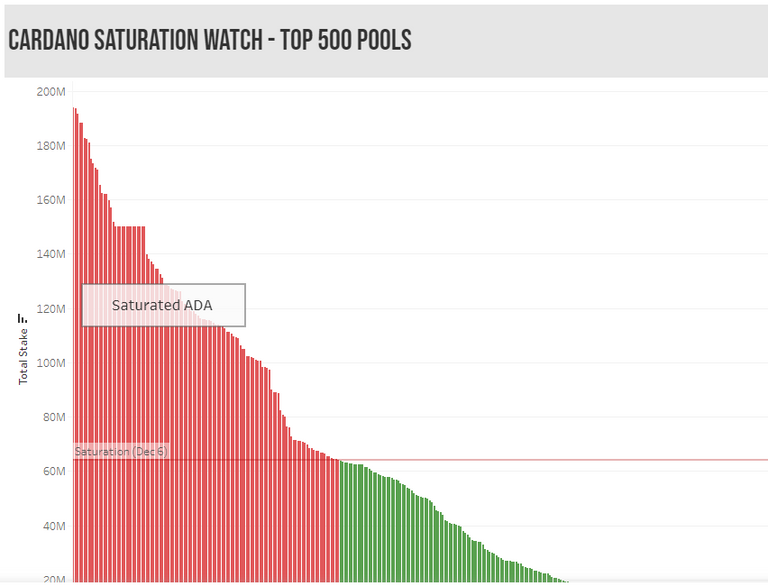 source
source
Cardano team has designed the staking algorithms to be decentralized, convenient, and fair. And to make all these three advantages real, Cardano presented many privileges
Firstly, Cardano introduced their staking pools with no "lock-up" periods. You can stake/unstake your ADA coins at any time of your convenience. Compared with other POS blockchains, your coins might be locked for several days, months, or even years...
Secondly, you can stake your coins directly from your Daedalus or Yoroi, both of which are official wallets developed by IOHK, and you can easily choose whatever staking pool you want or switch between them seamlessly.

Thirdly and most interestingly, staking pools on Cardano are designed so the network doesn't get dominated by a handful of nodes. This is the main point of decentralization and Cardano wants to translate its claims into reality.
To achieve this goal, staking rewards on a given pool go down as the pool reached a certain saturation point(64 million ADA).
In other words, there is a threshold that once a staking pool reaches, it offers diminishing returns to near zero. This is meant to incentivize pool operators to modify their staking parameters and incentivize stakers to distribute their holdings into several staking pools. And the whole point of all that is to make Cardano blockchain as decentralized as possible...
ِProgramming Language:
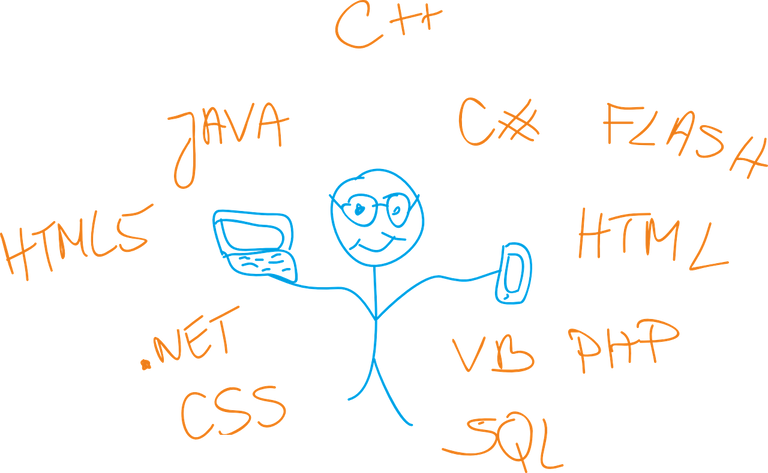
While Ethereum adopts its very own high-level programming language which was developed by its founders and called Solidity, Cardano utilizes a smart contract programming language called Plutus, which is based on the Haskell programming language and has many similarities with it.
This gives developers further simplicity to write smart contracts and saves lots of time by sparing them from learning a completely new programming language.
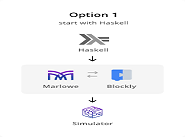
What is more, Cardano also leverages another language called MARLOWE, which is basically designed for "dummies" and allows those with zero technical knowledge to easily create smart contracts without having to write even a single line of code. Instead, it includes pre-programmed blocks that can be stacked together to create a smart contract.
ERC-20 Converter:
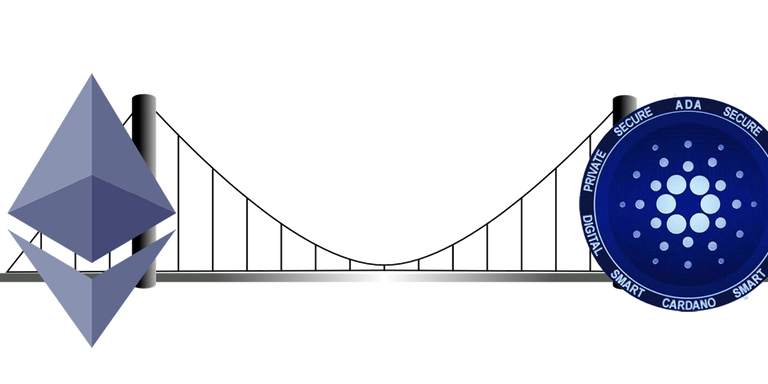
As mentioned earlier, Cardano is the fiercest competitor to Ethereum and is the most capitalized Proof of Stake (PoS) blockchain. And to be blunter in that competition, Cardano is on the verge of launching an ERC-20 token converter in the next week or two. This basically allows ERC-20 token issuers to easily migrate their tokens on Ethereum blockchain to Cardano blockchain and vice versa.
Francisco Landino, from the Arch Case team, explained what the ERC20 Converter is:
The ERC20 Converter is a bridge to connect Ethereum’s blockchain to Cardano, so users will be able to migrate their tokens from Ethereum to Cardano, people will be able to move liquidity or to move their utility tokens to use the applications that are migrating from Ethereum to Cardano. This is a two-way bridge, so users can migrate from Ethereum to Cardano and from Cardano to Ethereum.
Now, I don't know about you guys, but I strongly believe that this ERC-20 token converter could be a game-changer in the crypto space because if it really proves to be successful, we might witness a mass exodus of Derfi and NFTs projects from Ethereum to Cardano.
Charles Hoskinson has been so upfront about his intentions, and he has stated on multiple occasions that he wants to bring as many tokens from Ethereum to Cardano as he can.
Conclusion:
Smart contract has always been an alluring space for many crypto projects over the past few years. Most of them are trying to overtake Ethereum or at least co-exist with it. "Ethereum killer" has been the most prevalent buzzword for years.
While the vast majority of those projects are nothing but quasi-scams, Cardano seems to be very serious bout its goal. It has been growing slowly but surely and implementing science-based updates non-stop. Cardano is on its right way to winning a gold medal in decentralization thanks to its special staking algorithm with many privileges in speed, efficiency, and performance. It is offering paved ways for ERC-20 token issuers to migrate to it, and to say that Ethereum should be worried about that is an understatement.
While I believe that Ethereum 2.0 is going to introduce many advantages that would well defend its place as a leader of the smart contract space, I can't help but marvel at how competitive Cardano has become in recent months. Whether Cardano will be able Ethereum remains to be seen, but if there is any project that you could truly call an "Ethereum killer", Cardano is the one...
Publish0x
PS, Unless otherwise stated, all images in this post are either my own design or from free photo-sharing sites (e.g. pixabay.com)
Congratulations! This post has been upvoted by the @blurtcurator communal account,
You can request a vote every 12 hours from the #getupvote channel in the official Blurt Discord.Don't wait to join ,lots of good stuff happening there.